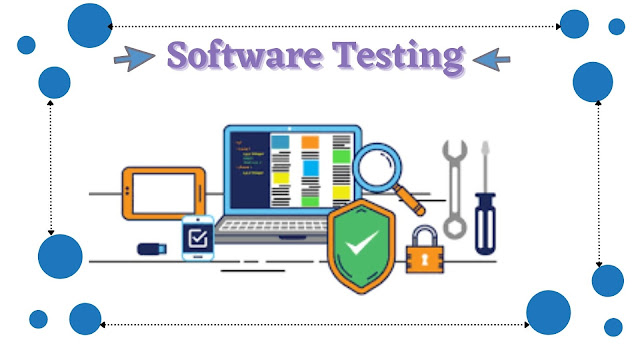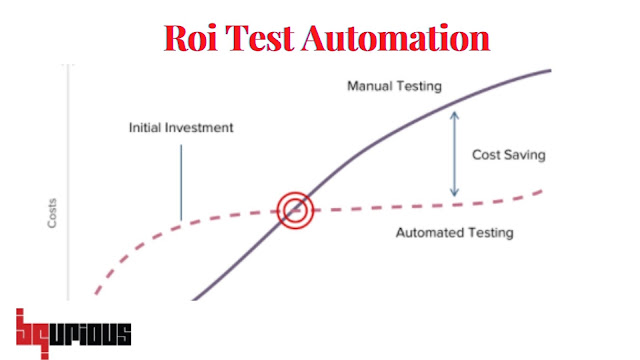What is Software Testing?
Software testing is an integral process in the software development cycle, and without it, software that is developed would be full of bugs, errors and most certainly will not work. So what is software testing? Some consider it to be the process of making sure something works as expected.
Definition of Software Testing:
What do you understand by the term ‘Software Testing'? Why is it important? These are a few questions that ought to be answered before entering the Software Testing world. Even though most of us get introduced to Software Testing through our instruction at colleges and universities, there is a requirement of having complete knowledge of what this testing actually comprises. It is important to know how testing differs from quality control and which method it is going to be used for validating the specifications, benchmarks, and objective functions that are primarily highlighted in the Software documentation.
Read More: End-To-End AI Based Functional Testing: Bqurious
Why do we need Software Testing?
Why do we need software testing? There are many answers to this question, but I think the best one is that it's the best way to check if your application is ready for launch. Even though there are many different reasons, they're pretty much all getting down to one thing: testing ensures the quality of a product.
It's important to understand that software testing is not only a process of finding bugs in an application. It can be used for many purposes and can bring a lot of benefits.
Software testing is a process that helps you identify different issues in your application. It helps you find bugs and errors and improve the quality of your software before launch. It also helps you keep your product safe from security threats and malicious attacks. Finally, it helps you improve user experience and achieve business goals.
The benefits of software testing are numerous, but it goes without saying that some projects require more tests than other ones. For example, if you're creating a simple calculator app, there probably won't be any need for performance or security tests. However, if you're developing a complex web-based project with lots of features, there will definitely be a need for more extensive testing. Here are some blogs you can read about automated regression testing.
What are the different types of Software Testing?
There are many different types of software testing. The most common include:
Functional software testing (or "white box testing") looks at the functional requirements of a software program and tests whether those requirements are met.
Functional testing is often done by the developers themselves, to ensure that their code does what it is supposed to do.
Non-functional software testing (or "black box testing") looks at the non-functional requirements of a software program, the performance and reliability aspects of the program. Non-functional tests can be automated using specialized tools, or performed manually.
Regression testing seeks to determine whether changes to a program have introduced new defects into previously working components of that program.
The term "software testing" also includes validation and verification. Validation involves ensuring that a product meets its specifications, while verification involves checking that the product actually works correctly.
Testing doesn't necessarily mean running individual test cases or test suites on a program; it can also mean running an entire test plan or test case base. Thus, one might speak of "a regression test", or "a system integration test", or even "a complete QA cycle".
What Are The Software Testing Methods:
Software testing is a very important part of software development. It helps to improve the quality of software and reduce rework. There are many different approaches and techniques used in software testing. Ideally, you will want to use a combination of these methods. Below are some of the most common methods:
White Box Testing (code level)
White Box Testing (code level) is also known as Glass Box Testing or Clear Box Testing. With White Box Testing, you have access to the code, so you can test internal paths, decision points, loops, and processes that the code executes. White box testing is done at the unit level of the code. One of the main advantages of white-box testing is that it can help to detect programming errors like logic errors and incorrect assumptions about preconditions in requirements or specifications.
Testing Techniques: Table-driven Test Cases, Decision Table Testing, Decision Tree Testing, Flowcharting, State Transition Diagramming
Black Box Testing:
Black Box Testing is also known as Glass Box Testing or Clear Box Testing. With Black Box Testing, you do not have access to the code. You must test based on functionality instead of internal paths or decision points. In black-box testing, you test to see if it works at all, instead of verifying that.
What Are The Software Testing Levels?
When you are developing an application, it is important that the app be tested before it is released. Software testing ensures that the software will perform as expected. Software testing generally falls into three major categories: unit testing, integration testing, and system testing.
Unit tests
These tests check to see if each part of your code functions correctly on its own. An example would be testing to see if a calculator works correctly, including math operations like adding, subtracting and dividing. Unit tests are typically written by the developers who create the piece of code being tested.
Integration tests
These tests check to see how two or more parts of a system work together. An example would be checking an inventory control system to make sure that when products are sold, they are deducted from inventory, and that when inventory runs low, an order for more items is placed with the supplier. These types of tests are typically written by quality assurance specialists, who test functionality after it has been created by the developer and unit tested by the developer.
System tests
Systems tests check all parts of a system to ensure that they work together as a whole. An example would be checking the inventory control system to make sure that it works with other systems, such as shipping and payment processing. Because they test




Tic Tac Toe Ultimate tic tac toe also known as ten tac toe, super tic tac toe, strategic tic tac toe, meta tic tac toe, or tic tac toe ² . Play Tic Tac Toe
ReplyDeletehttps://play.google.com/store/apps/details?id=com.fixiongames.numero